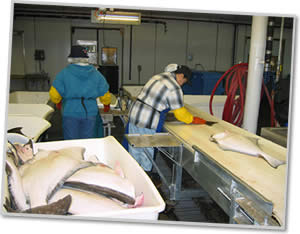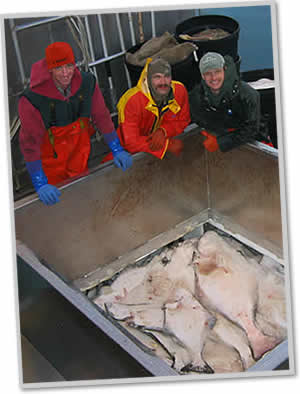|
Click any photo
to enlarge:




|
Halibut Association of North America
Welcome to the Halibut Association of North America (HANA), a bilateral trade association dedicated to protecting and promoting the Pacific halibut processing industry. Since 1961, HANA has represented its U.S. and Canadian members in the regulatory, marketing, and scientific arenas. HANA’s commitment to conservation, sustainability, and business practices that ensure the highest quality product to consumers, leads an industry with roots back to the turn of the 20th century. For more than 50 years, HANA has been the voice of the industry on these diverse issues.
|
History
The Pacific halibut commercial fishery began in the late 1800’s. Then, as now, processors valued their close ties to the men and women who skippered the halibut boats and made up the coastal communities. The processing industry continues to be an important economic partner with these communities, many of which are located in remote areas of Alaska and British Columbia. Today’s commercial Pacific halibut industry started in the Strait of Juan de Fuca, a passage between the U.S. and Canada known for its beauty, strong tidal currents, and unpredictable weather. It took some skill to fish, land, and ice halibut aboard a sailing vessel in 1890.....read more
|
 NorQuest Halibut Processing Plant
NorQuest Halibut Processing Plant
|
 A full load for the F/V Miss Emily,
A full load for the F/V Miss Emily,
a longliner from Cordova, AK
|
Pacific Halibut:
~The Best Managed Fisheries
HANA members are proud to be an integral part of one of the best-managed fisheries in the world. In 2006 the Pacific halibut fishery received the Marine Stewardship Council’s certificate of sustainability.
This award acknowledges what has long been the industry’s credo—that the health of the resource must come first to fuel the economic growth that brings local, national, and international commerce.
Photos on this page courtesy of Captain Jim Kallander.
|
|
|